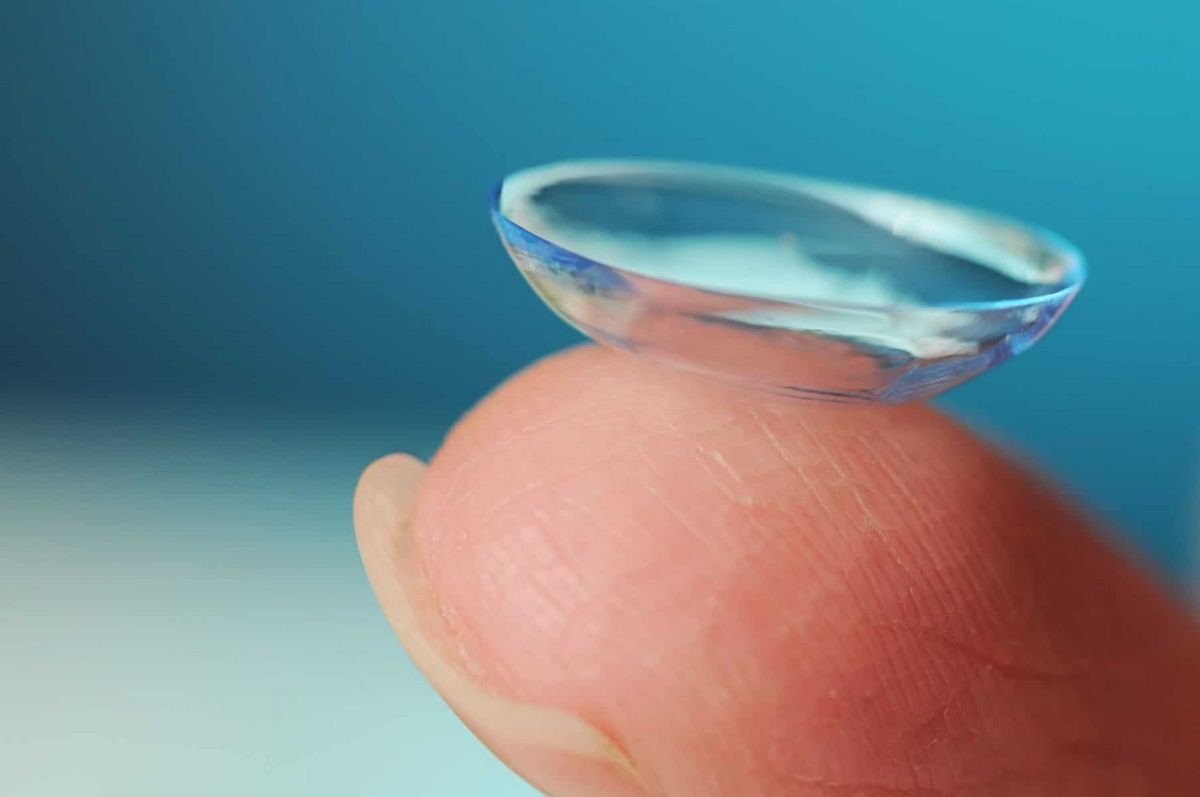
Contents
- 1 Contact Lens Products
- 1.0.1 Soft Lenses
- 1.0.2 Rigid-Gas-Permeable (RGP) Contact Lenses
- 1.0.3 Extended Wear Contact Lenses
- 1.0.4 Disposable (Replacement Schedule) Contact Lenses
- 1.0.5 Lens Comparison
- 1.0.6 Specialized Uses of Contact Lenses
- 1.0.7 Orthokeratology (Ortho-K)
- 1.0.8 Decorative (Plano) Contact Lenses
- 1.0.9 Contact Lens Solutions and Products
Contact Lens Products
There are two categories of contact lenses – soft and rigid gas permeable (RGP). All contact lenses require a valid prescription.
Soft Lenses
Soft contact lenses are made of soft, flexible plastics that allow oxygen to pass through to the cornea. They may be easier to adjust to and more comfortable than RGP lenses. Newer soft lens materials include silicone-hydrogels to provide more oxygen to your eye while you wear your lenses.
Rigid-Gas-Permeable (RGP) Contact Lenses
RGP contact lenses are more durable and resistant to deposit buildup, and generally provide clearer, crisper vision. They are less expensive over the life of the lens since they last longer than soft contact lenses. They are easier to handle and less likely to tear. However, they are not as comfortable initially as soft contacts and may take a few weeks to get used to wearing, compared to several days for soft contacts.
Extended Wear Contact Lenses
Extended wear contact lenses are available for overnight or continuous wear ranging from one to six nights or up to 30 days. They are usually soft contact lenses. There are also a very few RGP lenses that are designed and approved for overnight wear. Length of continuous wear depends on lens type and your eye care professional’s evaluation of your tolerance for overnight wear. It’s important for the eyes to have a rest without lenses for at least one night following each scheduled removal.
Disposable (Replacement Schedule) Contact Lenses
The majority of soft contact lens wearers are prescribed some type of frequent replacement schedule. "Disposable," as defined by the FDA, means used once and discarded. With a true daily wear disposable schedule, a brand new pair of lenses is used each day.
Some soft contact lenses are referred to as "disposable" by contact lens sellers, but actually, they are for frequent/planned replacement. With extended wear lenses, the lenses may be worn continuously for the prescribed wearing period (for example, 7 days to 30 days) and then thrown away. When you remove your lenses, make sure to clean and disinfect them properly before reinserting.
Lens Comparison
The American Optometric Association has more detailed information about contact lenses including a lens comparison chart.
American Optometric Association
Specialized Uses of Contact Lenses
Conventional contact lenses correct vision in the same way that glasses do, only they are in contact with the eye. Two types of lenses that serve a different purpose are orthokeratology lenses and decorative (plano) lenses.
Orthokeratology (Ortho-K)
Orthokeratology, or Ortho-K, is a lens fitting procedure that uses specially designed RGP contact lenses to change the curvature of the cornea to temporarily improve the eye’s ability to focus on objects. This procedure is primarily used for the correction of myopia (nearsightedness).
Overnight Ortho-K lenses are the most common type of Ortho-K. There are some Ortho-K lenses that are prescribed only for daytime wear. Overnight Ortho-K lenses are commonly prescribed to be worn while sleeping for at least eight hours each night. They are removed upon awakening and not worn during the day. Some people can go all day without their glasses or contact lenses. Others will find that their vision correction will wear off during the day.
The vision correction effect is temporary. If Ortho-K is discontinued, the corneas will return to their original curvature and the eye to its original amount of nearsightedness. Ortho-K lenses must continue to be worn every night or on some other prescribed maintenance schedule to maintain the treatment effect. Your eye care professional will determine the best maintenance schedule for you.
Currently, FDA requires that eye care professionals be trained and certified before using overnight Ortho-K lenses in their practice. You should ask your eye care professional about their certification if you are considering this procedure.
Decorative (Plano) Contact Lenses
Some contact lenses do not correct vision and are intended solely to change the appearance of the eye. These are sometimes called plano, zero-powered or non-corrective lenses. For example, they can temporarily change a brown-eyed person’s eye color to blue, or make a person’s eyes look "weird" by portraying Halloween themes. Even though these decorative lenses don’t correct vision, they’re regulated by the FDA, just like corrective contact lenses. They also carry the same risks to the eye. These risks include:
- conjunctivitis (pink eye)
- corneal ulcers
- corneal abrasion
- vision impairment or blindness
FDA is aware that consumers without valid prescriptions have bought decorative contact lenses from various sources. Buying contact lenses without a prescription is dangerous!
If you’re considering getting decorative contact lenses, you should:
- get an eye exam from a licensed eye care professional
- get a valid prescription that includes the brand and lens dimensions
- buy the lenses from an eye care professional or from a vendor who requires prescription information
- follow directions for cleaning, disinfection, and wearing the lenses, and visit your eye care professional for follow-up eye exams
FDA issued a guidance document, "Guidance for Industry, FDA Staff, Eye Care Professionals, and Consumers – Decorative, Non-corrective Contact Lenses" on November 24, 2006. This document explains the legislation which makes all contact lenses, including decorative ones, medical devices. It also provides instructions on how to provide comments and suggestions to FDA about this issue.
Contact Lens Solutions and Products
There are a variety of solutions that can be used for contact lenses. But these solutions can also cause serious problems if not used correctly. Incorrect care of contact lens solutions can increase your risk of eye infections and corneal ulcers. These conditions can be very serious and even cause blindness.
To reduce your risk of infections:
- Always wash your hands before handling contact lenses
- Remove the lenses immediately and consult your eye care professional if your eyes become red, irritated, or your vision changes
- Always follow the directions of your eye care professional and all labeling instructions
- Use contact lens products and solutions recommended by your eye care professional
- Do not use expired contact lens solutions
- Only use sterile saline solutions for rinsing. Do not use them for cleaning and disinfecting your lenses
- Rub and rinse your contact lenses as directed by your eye care professional
- Clean and disinfect your lenses properly following all labeling instructions
- Do not “top-off” the solutions in your case
- Do not expose your contact lenses to any water
- Do not put your lenses in your mouth to wet them
- Clean, rinse, and air-dry your lens case each time lenses are removed
- Replace your contact lens storage case every 3-6 months
- Do not transfer contact lens solutions into smaller travel size containers
To view a video on handling, inserting, removing and caring for your contact lenses, go to:
American Optometric Association
American Optometric Association


